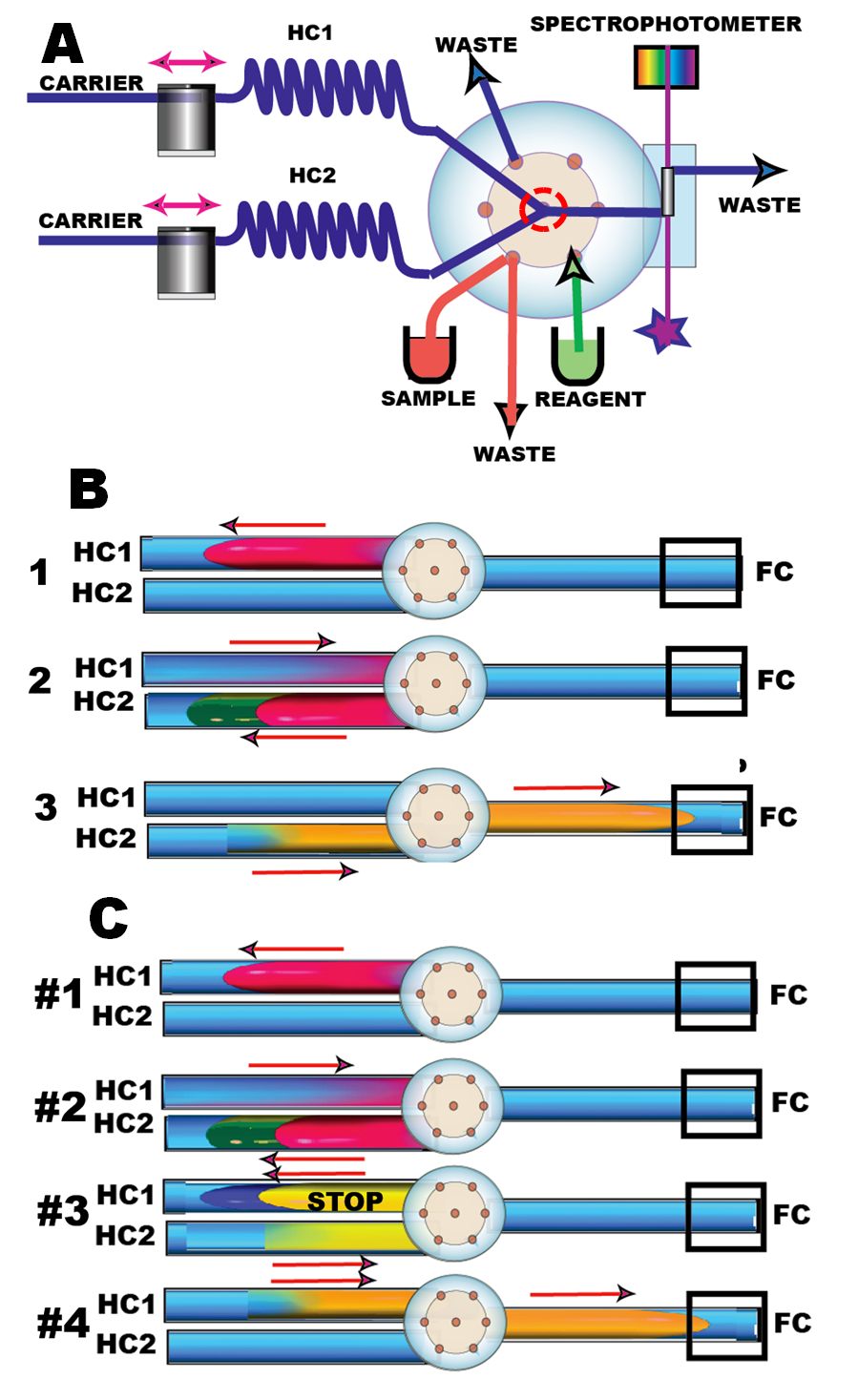pFI: Reversed and Stopped Flow in
Lab-on-valve Format
Principle and Assay Protocol
By using lab-on-valve platform for microfluidics, and deionized water as carried, the thus miniaturized pFI technique is based on synchronized merging of sample zone with reagent zones, at a confluence point situated at the central port of the LOV manifold (A). In distinction to the established cFI mode of operation, sample zone is mixed with reagents upstream from the confluence point, inside holding coils (HC1,HC2). In this way sample zone is supplied along its entire length with an even concentration of reagent(s) – as in traditional FI, but it also experiences flow reversals before reaching the flow through cell. The flow programming also allows insertion of stop flow period anywhere on the flow path, thus providing time for incubation of sample with reagents.
The assay protocol for a single reagent method (B) comprises the following steps:
1) sample (red) is aspirated into holding coil (HC1)
2) sample is transferred into HC2 simultaneously with reagent (green), that is added at the confluence point. The mixing ratio of sample with reagent is controlled by flowrates of the pumps
3) the reaction product (orange) is moved through the flow cell for monitoring.
The assay protocol for two reagent method (C) is an extension of the single reagent protocol, by addition of the second reagent in step #3. In this protocol the sample zone experiences three flow reversals.
The injected sample volume, as well as volumes of reagents and their mixing ratios are controlled by software protocol. Therefore the same flow system will accommodate a wide variety of reagent based assays without need for physical reconfiguration, such as volume of sample injection loop, or length of reaction coil or change of diameter of peristaltic pump tubing.
1.2.24.

Stopping the flow is a versatile approach for optimizing sensitivity of an assay as it allows inclusion of an incubation period of sample with reagents. The reaction mixture can be arrested either in the holding coil (SHC method) or in a flow cell (SFC method). Depending on the requirements of an assay the holding coil can be thermostated, and the stop flow executed at a selected stage (C) in a protocol.









